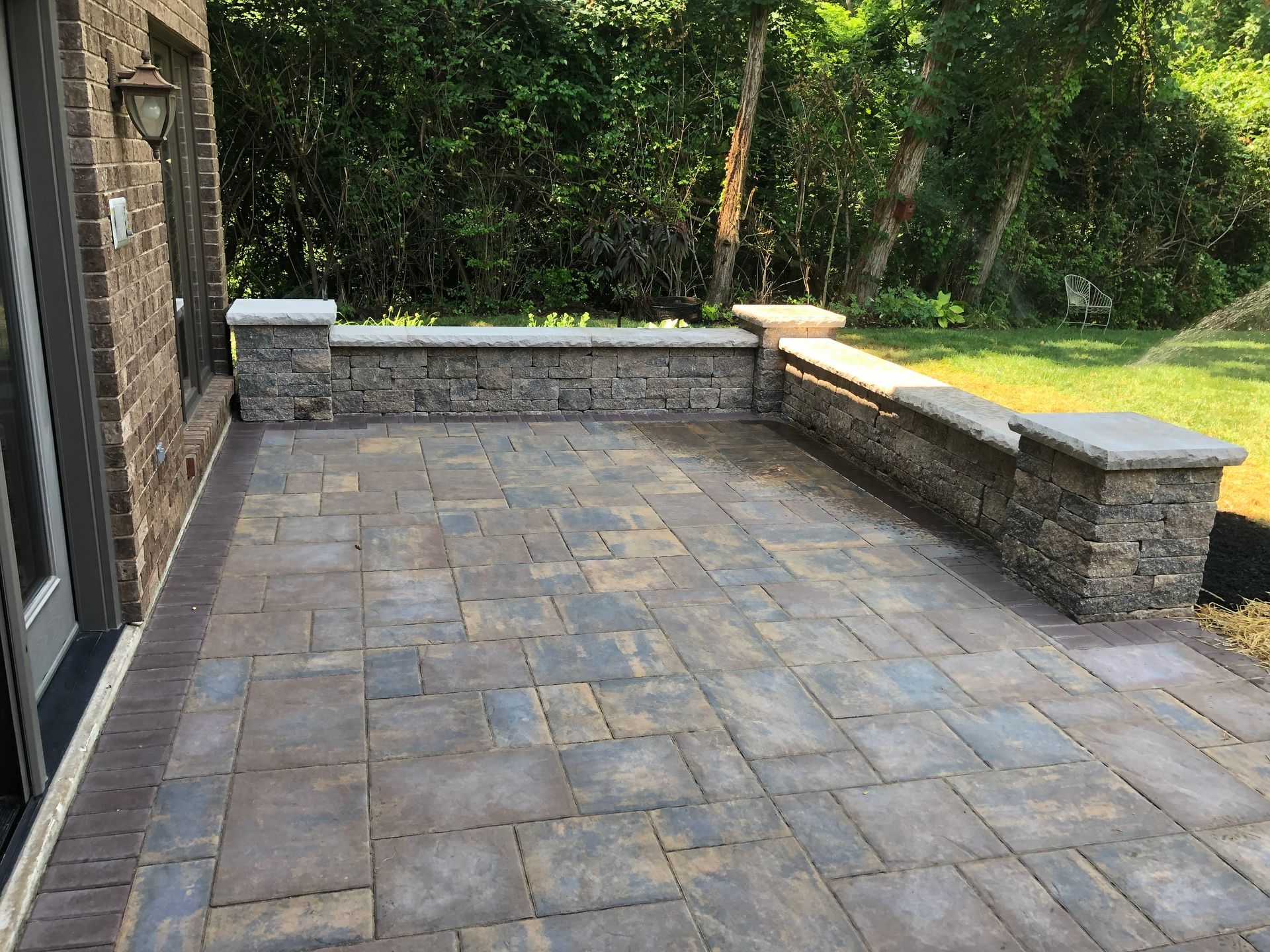Why Choose a Paver Patio Over Concrete? The Benefits You’ll Love
Adam Lawson • March 4, 2025
When it comes to designing the perfect backyard oasis, the foundation you choose sets the tone for everything else. While concrete patios have long been a go-to option, paver patios are gaining popularity—and for good reason. If you’re debating between pavers and concrete for your outdoor space, here are some compelling benefits of choosing a paver patio that might just sway your decision.
1. Unmatched Aesthetic Appeal
Pavers come in a stunning variety of shapes, sizes, colors, and textures, allowing you to create a custom look that complements your home and personal style. Whether you prefer the sleek sophistication of gray tones, the rustic charm of cobblestone, or a modern geometric pattern, pavers offer endless design possibilities. Concrete, while versatile in its own right, often lacks the same depth of character and tends to feel more utilitarian unless heavily customized (which can get pricey).
2. Durability That Stands the Test of Time
Pavers are built to last. Made from strong materials like brick, stone, or concrete, they’re designed to withstand heavy foot traffic, harsh weather, and the occasional dropped grill tongs. Unlike concrete, which can crack under pressure or shifting soil, pavers are individual units that flex with the ground. If one does get damaged, you can simply replace it without tearing up the entire patio—a costly and messy ordeal with concrete.
3. Easy Maintenance and Repairs
Speaking of repairs, paver patios are a homeowner’s dream when it comes to upkeep. Stains from spilled drinks or grill grease? A quick scrub or a replacement paver can fix it. Weeds popping up? The interlocking design and sand joints make it easier to manage than concrete’s inevitable cracks. Concrete, on the other hand, often requires resurfacing or sealing to keep it looking fresh, which can add up in time and expense.
4. Better Drainage and Eco-Friendliness
One of the standout benefits of paver patios is their permeability. When installed with proper spacing and a gravel base, pavers allow water to seep through the joints, reducing runoff and helping to recharge groundwater. This eco-friendly feature is a big win for sustainability-minded homeowners. Concrete, being a solid slab, directs water away (often to places you don’t want it) and can contribute to pooling or erosion issues if not paired with a robust drainage system.
5. Flexibility for Future Upgrades
Dreaming of adding a sitting wall, outdoor kitchen, or fire pit down the line? Pavers make it easy to expand or reconfigure your patio without starting from scratch. Their modular nature means you can seamlessly integrate new features or adjust the layout as your needs evolve. With concrete, you’re often locked into the original pour—or facing a jackhammer and a hefty bill to make changes.
6. Slip Resistance for Safety
Safety is key in any outdoor space, especially if you’ve got kids, pets, or frequent gatherings. Pavers typically offer better traction than smooth concrete, especially when wet. Many paver styles come with textured surfaces that reduce the risk of slips and falls—peace of mind concrete can’t always match without additional treatments.
7. Cost-Effective in the Long Run
While the upfront cost of pavers might be higher than a basic concrete slab, the long-term value often tips the scales in their favor. Their durability, low maintenance, and ease of repair mean fewer headaches and expenses over time. Plus, a well-designed paver patio can boost your home’s curb appeal and resale value, making it a smart investment.
Final Thoughts: Pavers Win for Style and Substance
Choosing between a paver patio and concrete comes down to what you value most in your outdoor living space. If you’re after a combination of beauty, practicality, and flexibility, pavers are tough to beat. Imagine hosting friends on a stunning gray-toned paver patio, complete with a sitting wall and outdoor kitchen—all tailored to your taste and built to last. Concrete might get the job done, but pavers elevate it to something extraordinary.
Ready to transform your backyard? A paver patio could be the perfect place to start.




